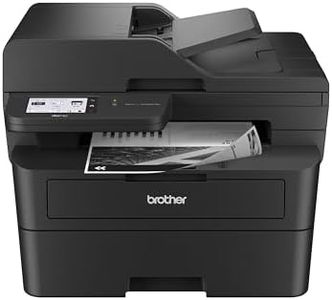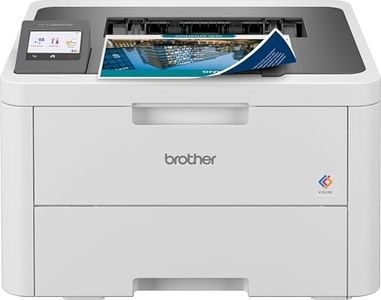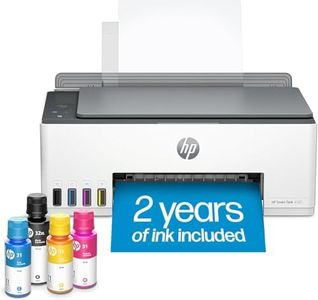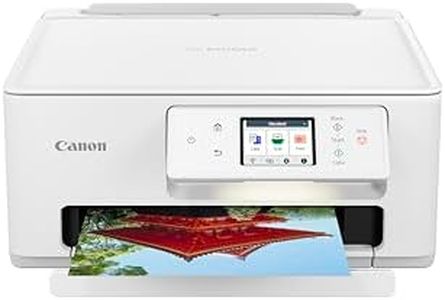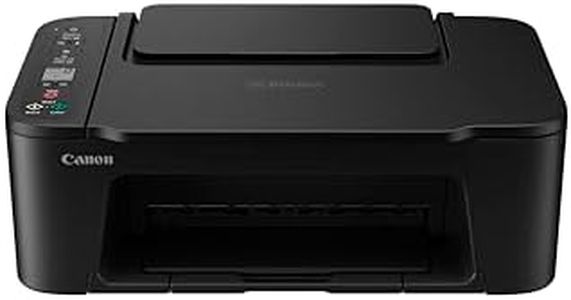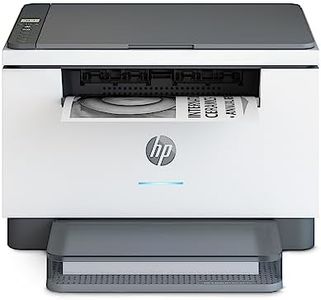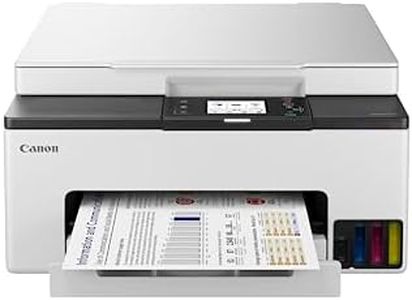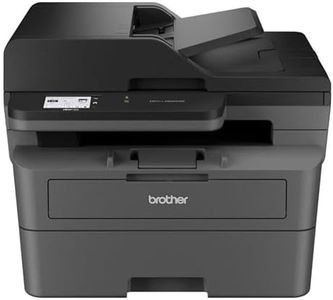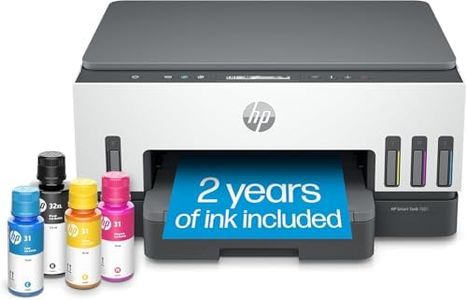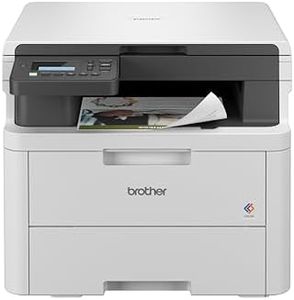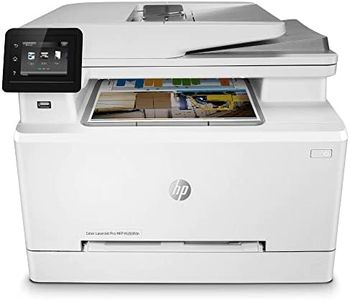We Use CookiesWe use cookies to enhance the security, performance,
functionality and for analytical and promotional activities. By continuing to browse this site you
are agreeing to our privacy policy
10 Best Home Laser Printers
From leading brands and best sellers available on the web.Buying Guide for the Best Home Laser Printers
Choosing a home laser printer can feel overwhelming because of the many options available, but if you break down your needs and pay attention to a few key specifications, you can find one that suits your lifestyle perfectly. Start by thinking about how often you print, what types of documents you handle (text, graphics, photos), and if you need extra features like scanning or wireless connectivity. Understanding these basics will help you navigate the different printer specs and pick a model that's a great fit for your home.Print Speed (Pages Per Minute - PPM)Print speed, measured in pages per minute (PPM), tells you how many pages the printer can produce each minute. This is important if you print large documents or have multiple people using the printer. Lower speeds (under 20 PPM) are fine for casual, occasional use. Mid-range speeds (20-30 PPM) are more suitable if you print regularly or handle moderate workloads. Higher speeds (above 30 PPM) are great for heavy use or small office environments at home. Think about how much and how often you print—if it’s just the odd school report or boarding pass, speed may not matter much, but if you’re printing lengthy documents or lots of pages, aim for a higher PPM.
Print Resolution (DPI)Print resolution is measured in dots per inch (DPI) and tells you how detailed and sharp your printed documents will appear. For most text documents, a standard resolution (600 x 600 DPI or similar) is sufficient. If you want crisper results, especially for graphics or charts, look for higher resolutions (up to 1200 x 1200 DPI and above). However, laser printers generally excel with text and are not the best for high-quality photo prints, so only prioritize a very high DPI if you sometimes print images or detailed graphics.
Monochrome vs. ColorYou can choose between a monochrome (black-and-white) or a color laser printer. Monochrome models are sufficient for simple documents, letters, and text-heavy work, and they’re often more affordable and efficient to run. Color laser printers allow you to print in a range of colors, which is useful if you produce presentations, flyers, or other documents that benefit from color. Consider your typical printing needs: if you rarely need color, monochrome is usually preferable for simplicity and lower costs; choose color if you value versatility in your printouts.
Connectivity OptionsLaser printers can connect to your devices in several ways, including USB, Wi-Fi, and sometimes Bluetooth or Ethernet. USB is great for a direct, straightforward connection to one computer. Wi-Fi is very handy for sharing the printer between multiple devices and enables printing from phones or tablets. If you want convenience and flexibility, especially in a household with several users or devices, look for wireless connectivity. Think about how you’ll use the printer and who will need access—wireless is a wise choice for modern home setups.
Duplex Printing (Automatic Double-Sided Printing)Duplex printing refers to the printer’s ability to automatically print on both sides of the paper without manual flipping. This is important for saving paper, reducing clutter, and creating professional-looking documents or booklets. Some printers only offer manual duplex (you turn the paper yourself), while others do it automatically. If you print lengthy documents or care about saving paper, automatic duplex is a very helpful feature to have.
Monthly Duty CycleThe monthly duty cycle indicates the maximum number of pages a printer is designed to handle in a month. For home use, you don’t need a very high duty cycle; light users can manage with under 1,000 pages per month, moderate users might need between 1,000-5,000, and very heavy users (like those running a home business) could look at higher numbers. Think about how much you print per month and make sure your printer’s duty cycle gives you comfortable room above that.
Paper Handling and Input CapacityPaper input capacity tells you how many sheets the printer’s tray can hold at once, affecting how often you need to reload paper. Small trays (around 100 sheets) are okay for light users, while larger trays (250 sheets or more) reduce refilling for frequent users. Some printers also support special paper sizes or have extra trays for envelopes and labels. Consider your printing habits—if you print many pages often, a bigger tray will be more convenient.
Additional Features (Scanner, Copier, Fax)Many home laser printers are all-in-one devices that include scanning, copying, and sometimes faxing. If you only need to print, a simple model is enough, but if you need to scan documents, make copies, or occasionally send a fax, a multifunction printer is worth considering. Decide which extra features you’ll actually use in your home environment to avoid paying for things you don’t need.

